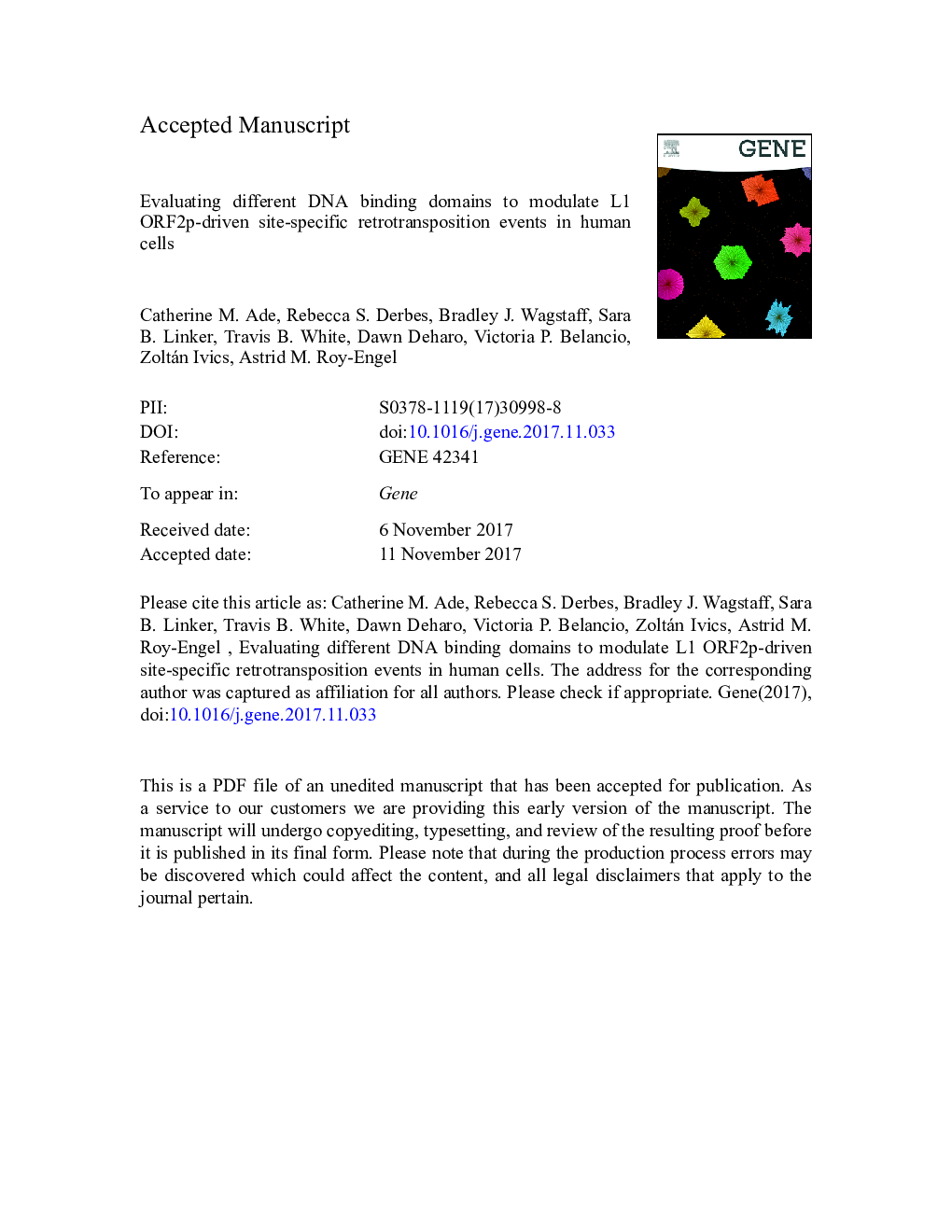| کد مقاله | کد نشریه | سال انتشار | مقاله انگلیسی | نسخه تمام متن |
|---|---|---|---|---|
| 8645923 | 1569794 | 2018 | 46 صفحه PDF | دانلود رایگان |
عنوان انگلیسی مقاله ISI
Evaluating different DNA binding domains to modulate L1 ORF2p-driven site-specific retrotransposition events in human cells
دانلود مقاله + سفارش ترجمه
دانلود مقاله ISI انگلیسی
رایگان برای ایرانیان
کلمات کلیدی
CRISPRZFSORF2AAVDBDsPAMgRNAHRPAlu - آلوTAL - ازRetrotransposition - انتقال مجددZinc fingers - انگشت رویHAC - اینجاLINE-1 - خط 1DNA binding domain - دامنه اتصال DNAguide RNA - راهنمای RNATarget site - سایت هدفprotospacer adjacent motif - موتیف مجاور protospacerAdeno-associated virus - ویروس Adeno مرتبط استhorse radish peroxidase - پراکسیداز تربچه اسبFusion protein - پروتئین فیوژن یا پروتئین همجوشی
موضوعات مرتبط
علوم زیستی و بیوفناوری
بیوشیمی، ژنتیک و زیست شناسی مولکولی
ژنتیک
پیش نمایش صفحه اول مقاله

چکیده انگلیسی
DNA binding domains (DBDs) have been used with great success to impart targeting capabilities to a variety of proteins creating highly useful genomic tools. We evaluated the ability of five types of DBDs and strategies (AAV Rep proteins, Cre, TAL effectors, zinc finger proteins, and Cas9/gRNA system) to target the L1 ORF2 protein to drive retrotransposition of Alu inserts to specific sequences in the human genome. First, we find that the L1 ORF2 protein tolerates the addition of protein domains both at the amino- and carboxy-terminus. Although in some instances retrotransposition efficiencies slightly diminished, all fusion proteins containing an intact ORF2 were capable of driving retrotransposition. Second, the stability of individual ORF2 fusion proteins varies and difficult to predict. Third, DBDs that require the formation of multimers for target recognition are unlikely to modify targeting of ORF2p-driven insertions. Fourth, the more components needed to assemble into a complex to drive targeted retrotransposition, the less likely the strategy will increase targeted insertions. Fifth, abundance of target sequences present in the genome will likely dictate the effectiveness and efficiency of targeted insertions. Lastly, the cleavage capabilities of Cas9 (or a Cas9 nickase variant) are unable to substitute for the L1 ORF2 endonuclease domain functions, suggestive that the endonuclease domain has alternate functions needed for retrotransposition. From these studies, we conclude that the most critical component for the modification of the human L1 ORF2 protein to drive targeted insertions is the selection of the DBD due to the varying functional requirements and impacts on protein stability.
ناشر
Database: Elsevier - ScienceDirect (ساینس دایرکت)
Journal: Gene - Volume 642, 5 February 2018, Pages 188-198
Journal: Gene - Volume 642, 5 February 2018, Pages 188-198
نویسندگان
Catherine M. Ade, Rebecca S. Derbes, Bradley J. Wagstaff, Sara B. Linker, Travis B. White, Dawn Deharo, Victoria P. Belancio, Zoltán Ivics, Astrid M. Roy-Engel,